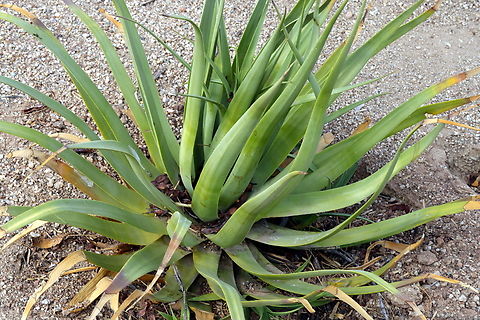
Appearance
Small among the agaves, its green and succulent leaves are long and lanceolate, 50–70 cm long and 3–5 cm at the base, where they are the widest. Compared to the larger, more formidable agaves, they have minute serrations along the margins but neither teeth, nor terminal spine, at the leaf tip. The leaves have a tendency to curl somewhat, in a fashion reminiscent of the octopus agave "A. vilmoriniana". The inflorescence spike is also short, at 1.2–1.7 meters, and its upper-third is densely covered with white or pale-yellow flowers. The flowers are distinctive, in that tepals arise from a disk-shaped receptacle rather than the usual tube. The stamens are quite long.Naming
Gentry defines a group "Choritepalae" that includes "A. bracteosa" along with "Agave ellemeetiana" and "Agave guiengola", and states that the discoid receptacle and unarmed leaves are different enough from other agaves to justify placing "A. bracteosa" and "A. ellemeetiana" into a separate genus, but the characteristics of "A. guiengola" link the group to the rest of "Agave".Habitat
The species can be found growing at altitudes between 900 and 1700 meters above sea level. Although it occupies a small range, it is not considered to be threatened.References:
Some text fragments are auto parsed from Wikipedia.